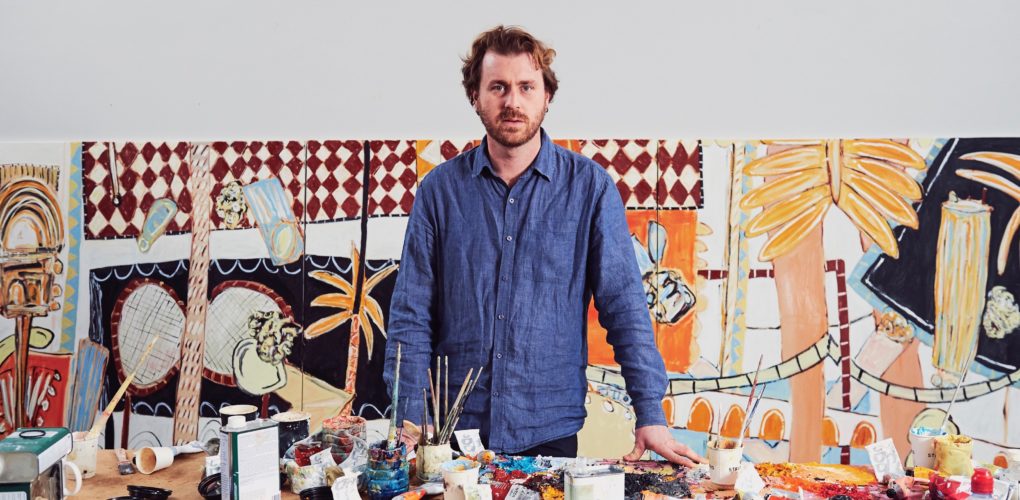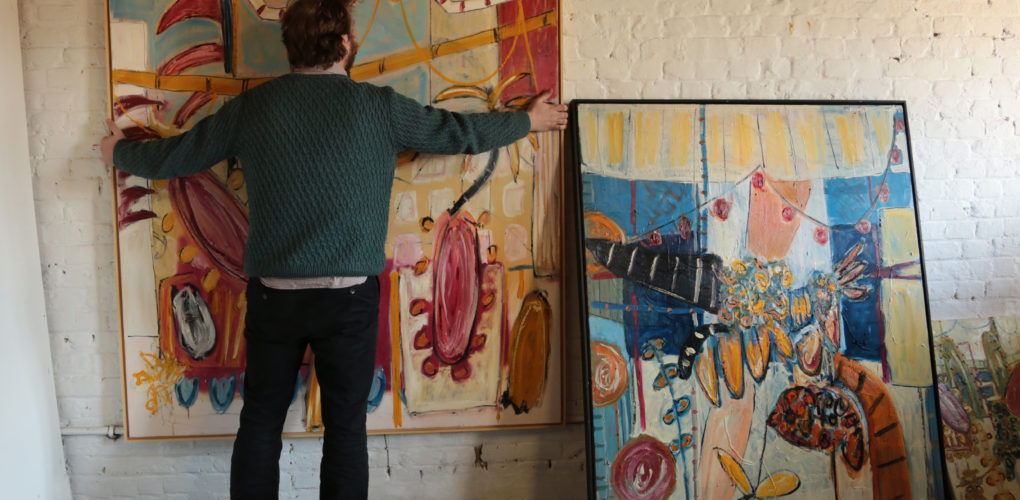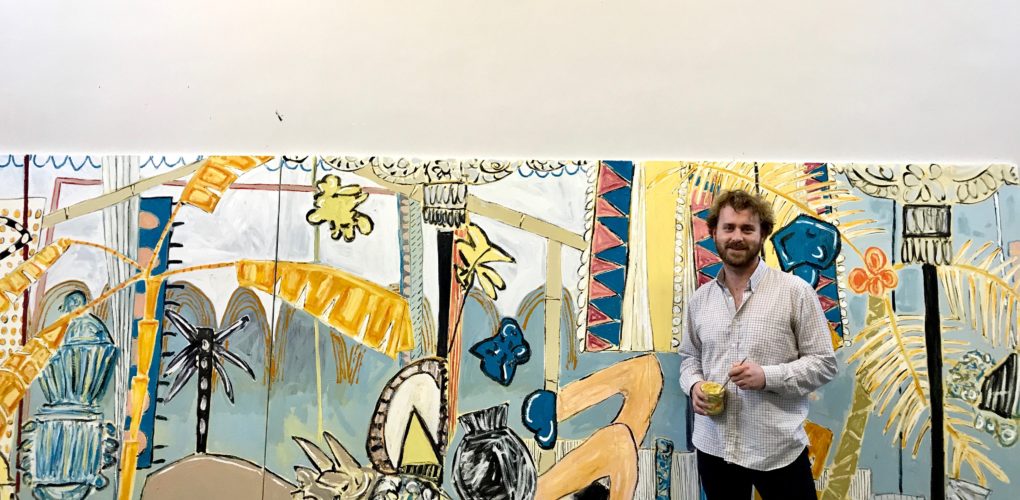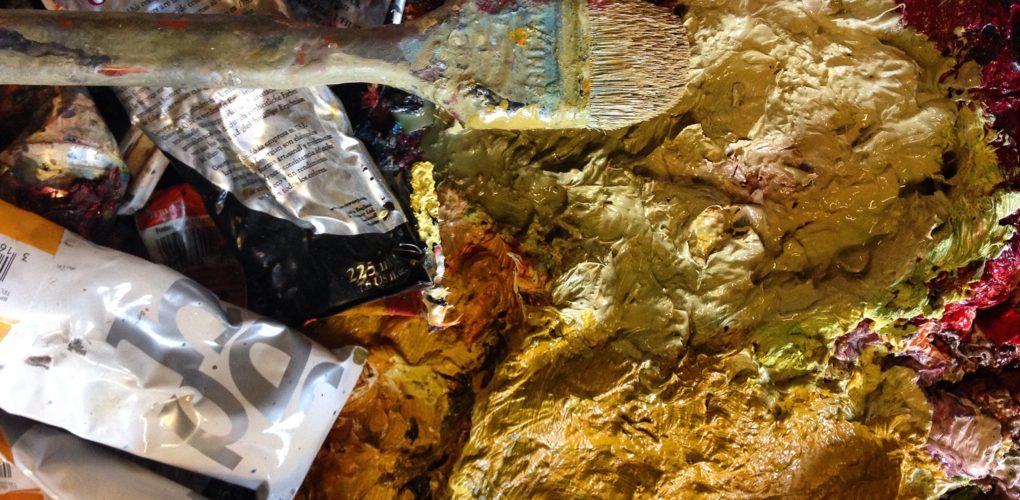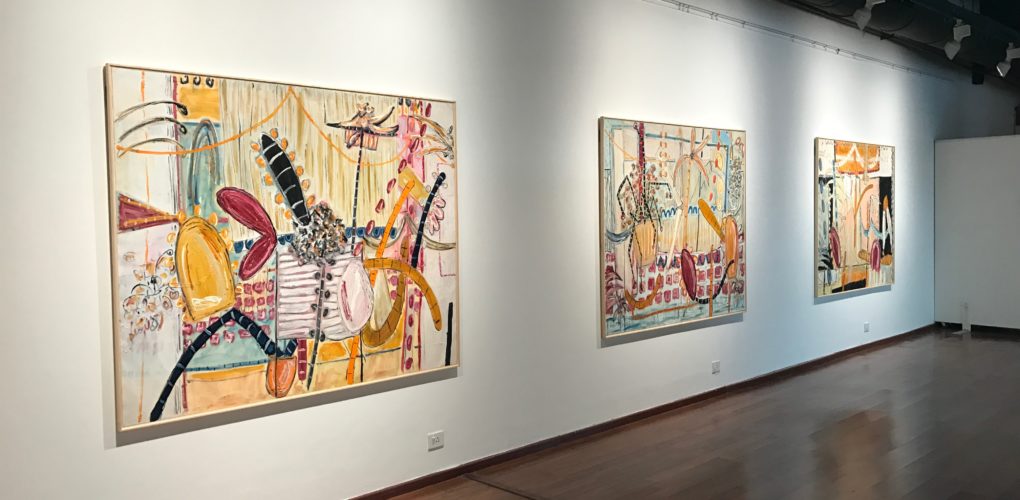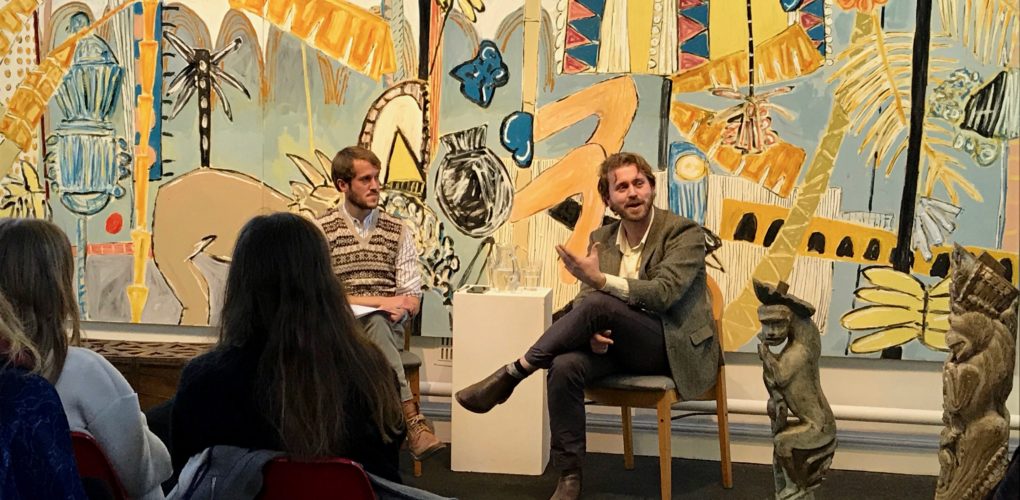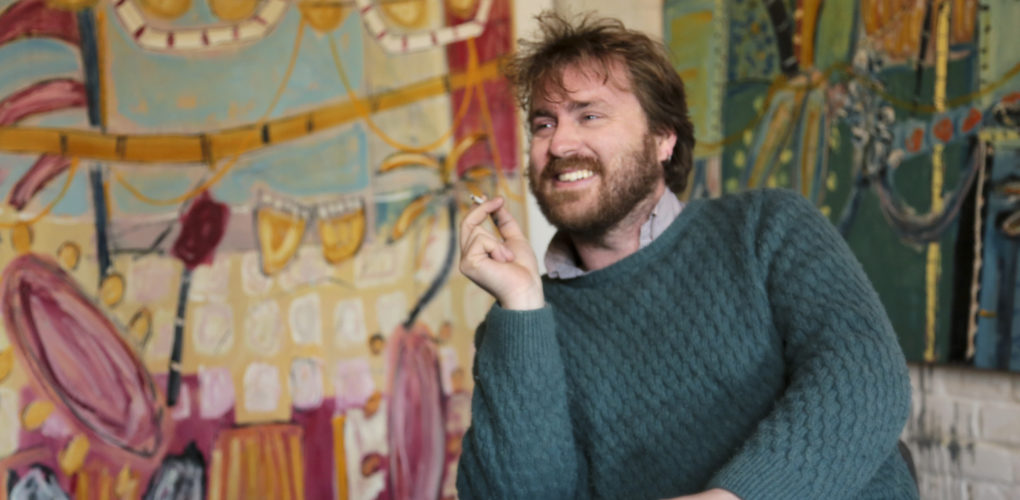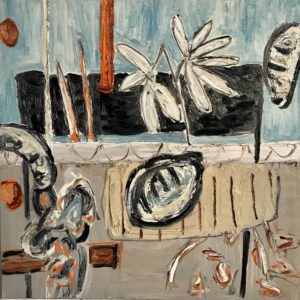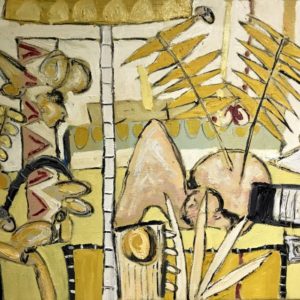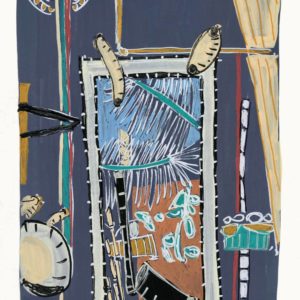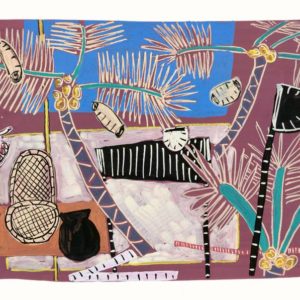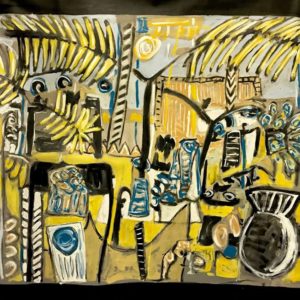One to Watch
 Capturing Moments with Alec Cumming
Capturing Moments with Alec Cumming
Alec Cumming expands fleeting moments in his paintings, translating his surroundings into a series of abstracted shapes and forms. Scenes from daily life and his experiences abroad in India continually inspire him– anything from architecture to gardens to traditional Indian saris can serve as a starting point for his works. Alec is interested in the dialogue between different cultural influences and plays with color, line, and form to offer a new perspective on the world around us.
Alec lives and works between Norwich, UK, and Delhi, India, and received a B.A. (Hons.) in Fine Art from the Norwich School of Art and Design. He has had numerous solo shows in the UK and India and is the youngest artist to have a solo exhibition with the British Council in India. He was selected as “One to Watch” at the India Art Fair 2016. Alec has also participated in several artist residencies, most recently with Dove Street Studios (Norwich) and the Goa Chitra Museum (Goa, India).
What are the major themes you pursue in your work?
Within my work I continue to explore the idea of moments. My new work engages with material gathered from my time in India. Having lived there for three years and now back to the UK, I find myself considering the visual stimulus discovered there.
Questions such as how this imagery translates into a ‘pan global’ vocabulary become interesting. Creating a dialogue of mixing a western/eastern influence and the back and forth nature of the discussion happen on the surface of the canvas; moments, that may or may not have existed.
Within my own abstracted painting style there are shapes and forms that lead to suggestions of ‘things.’ The ideas of semi-recognizable forms can suggest a narrative. Forms appear through drawings, thoughts, ideas, and experiences. The paintings may suggest spaces I know, fabrics, places, an interesting space between buildings seen whilst walking in the street, or even a collection of observed objects, tires stacked on the road, or a plate of jalebis. Abstraction allows me the pleasure of observing the world and translating it into a visual dialogue.
How did you first get interested in your medium, and what draws you to it specifically?
Oil painting has always been a major part of my practice. The buttery consistency you get from it as a paint has a substance to it, a material quality that feels natural. Gestural oil painting, the strokes you make that push the paint around the surface and the depth of field that can be created excite me.
How has your style and practice changed over the years?
My practice has developed as I have seen and explored more of the world around me. Place has always been very important to me– an understanding of my surroundings.
In many ways my work has developed to understand what abstraction is to me. Recently, I have started to include ideas of narrative and the unraveling story of the forms throughout the surface of the painting. It’s exciting to see what will be around the next corner. I see my painting as a constantly evolving practice the more of the world I observe and the more it has an effect on the vocabulary I use within the work.
Can you walk us through your process? Do you begin with a sketch, or do you just jump in? How long do you spend on one work? How do you know when it is finished?
My process is a physical one of working things out. The tricky part is trying to control the dialogue of the painting, knowing when to let yourself run away with it and the moments to hold back. This brings in the idea of almost letting the painting finish itself. The freedom of making the strokes on the canvas creates real moments of clarity; the process can absorb you.
These paintings come about in a playful way. I don’t necessarily set out with an idea– things develop. Conversations with the surface of the painting can be instantaneous but can also be prolonged. The painting comes to some sense of completion when all of the components come into focus for a split second.
What are some of your favorite experiences as an artist?
Getting to travel, I lived in Delhi, India for three years. Working in a studio in one of the world’s megacities was a fantastic experience for developing my painting and absorbing new, visual stimulus.
I love the luxury of spending time looking.
What was the best advice given to you as an artist?
Stick to you guns! I was told many years ago that to really succeed is to be honest within your work.
